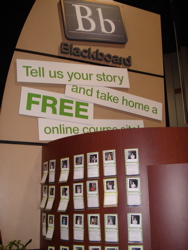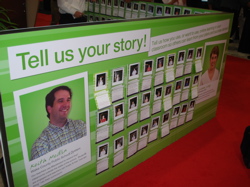Great marketing infuses a brand promise into everything a company does. It isn’t about the slogan – it is making the promise come alive for your customers in every small detail.

In honor of a Thanksgiving traipse down the tryptophan trail enjoy the images below from the Heart Attack Grill. They make a very simple promise and then drive it into every single thing the company does with quality and humor. They are also unabashedly politically incorrect.
They have done something remark-able – people will talk about it. TV news has covered it, blogs have been covering it, and radio is in on the act.
In education – where at least 50% of everyone’s sales come from referrals – this ability to be remark-able is essential. Yet we are saddled again and again with conservative copycat sample brochures and catalogs that could have been printed 15 or 20 years ago. What are you doing to make your products, services, and company remark-able?
I’m not suggesting that you mock 50 years of public health announcements – but just look at how they made a big promise and then delivered on it.
I don’t think this translates directly into the education publishing market – institutional sales have to be politically correct as anyone who has tangled with the California Legal and Social Compliance guidelines can attest to. The reason I’m highlighting it is that it is a stark example of driving the brand promise into the operations – taking messaging beyond empty slogans that no one believes or pays attention to.
First the menu:

When you are done get wheeled out to your car by a “nurse”

Follow below the fold for more hilarity.
Continue reading
 The Education Business Blog
The Education Business Blog


 We are collectively discovering the value of social media tools like
We are collectively discovering the value of social media tools like 


 Powerpoint slides are “glance media” just like billboards. Today’s post by Garr Reynolds at
Powerpoint slides are “glance media” just like billboards. Today’s post by Garr Reynolds at 


 It was arresting in its simplicity and represented a validation of the products in the words of end users. It also showed that great marketing doesn’t have to cost a lot.
It was arresting in its simplicity and represented a validation of the products in the words of end users. It also showed that great marketing doesn’t have to cost a lot.